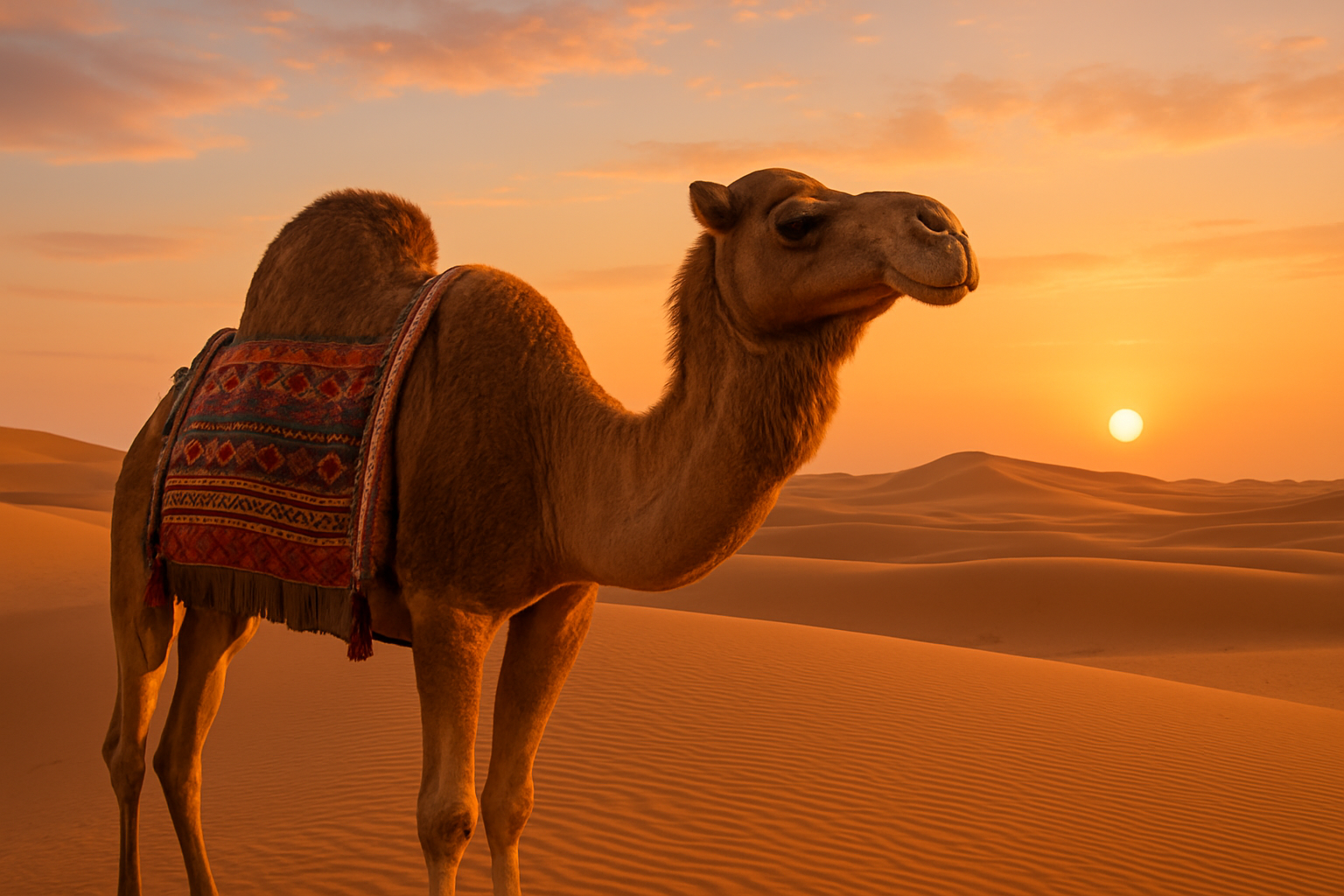5 Popular misconceptions about camels
Introduction
Camels are the champions of the desert: For thousands of years, camels have been dragging loads for humans through the hottest and driest regions of the world. Nevertheless, a lot of nonsense is still told about them. We clear up a few misconceptions about camels
Misconception 1: Camels have two humps
It is true that only the so-called Bactrian camels, which live mainly in Central Asia (and do not trample a bit, by the way), have two humps. Their number is estimated at around 2.5 million. Many more camels, namely the more than 25 million dromedaries, have only one hump.
These animals were tamed in Arabia 4000 to 5000 years ago and later also became popular pets and farm animals in North and East Africa. Until the 20th century, they transported trade goods such as salt or ivory in caravans through deserts such as the Sahara. You can find many wild dromedary camels in Australia today. The animals were shipped there in the 19th century to haul loads through the vast Australian wasteland.
When trucks and trains took over their work, the four-legged friends were released into freedom. There, the frugal animals multiplied at lightning speed and became a nuisance for the farmers: they ate everything bare, trampled down fences and displaced the cattle from watering holes. Every few years, the government therefore has tens of thousands of animals killed by hunters from airplanes.
In addition to Bactrian camels and dromedaries, the so-called Old World camels, there are also New World camels. These include biologists, llamas, guanacos, alpacas and vicuñas, all of which graze in the highlands of South America. They don’t have a hump at all.
Misconception 2: Camel humps are filled with water
It is true that there is fat inside the humps, which the animals feed on during periods of starvation. If a dromedary or Bactrian eats little, they become limp and flap to the side.
Nevertheless, the animals are walking water tanks: they can sip over 100 litres in a quarter of an hour and store it in their three stomachs.
People would have life-threatening water intoxication even with a tenth of the amount of fluid. Camels don’t mind that at all. They simply trudge off with the supply – if necessary, ten days or more through the desert without taking a sip.
Misconception 3: Camels always rock leisurely
Only half true: In nature, camels actually prefer a leisurely step. But when they are driven, the long-legged creatures can almost keep up with racehorses. In camel races, the top stars fly over the slopes at top speeds of 67 kilometers per hour – the record for humans is just under 45.
In Arab countries such as the United Arab Emirates, camel racing is so popular that the best racing camels are traded for millions of euros. In the past, the competitions were criticized because child jockeys sat on the animals, who were poorly paid by the camel owners and treated like slaves. Today, small, whip-wielding robots are strapped to the camel’s back.
Misconception 4: Camels are stubborn and vicious
This is at least very controversial: There are keepers who consider camels to be stubborn beasts who have to be forced to do everything by force. But others say: That’s not true at all, camels are naturally calm and good-natured!
They just don’t like it when you hit them. Or simply make them do things they don’t want to do. Then the four-legged friends can also become and resentful. Sometimes they wait a long time for an opportunity to take revenge and get back at their tormentor by biting or kicking. Because Camels seem to have a strong memory.
Misconception 5: Camels are nothing more than cargo tractors
That was never true..Camels have been helping people travel and carry things in the desert for thousands of years. But they have always been more than just animal transporters, but have been used as an all-purpose means for all kinds of things.
They supplied their owners with wool for clothing and manure as fuel. Milk, which is more nutritious and tolerable than cow’s milk, served as a daily food, and the meat is still eaten in many countries today like beef in Germany. For some time now, researchers have also been interested in special antibodies in the blood of New World camels – they could help doctors treat ailments such as sleeping sickness in the future.
Conclusion
Camels are sports stars and compete not only in races but also in wrestling matches. And at times, camels were even used in wars. For example, in the 19th century, when the US army fought against Indians in the dry southwest of the country. Fortunately, the troupe soon disbanded – and the exotic four-legged friends made a career as circus attractions or mail carriers.
Camels: Champions of the Desert
Think you know the truth about camels? Take this 5-question quiz and challenge the misconceptions!
Q1: Which type of camel has two humps?
Q2: What do camels store in their humps?
Q3: What’s the top speed recorded in camel races?
Q4: Why can camels appear stubborn or vicious?
Q5: Which of these is a benefit humans get from camels?








2 Comments